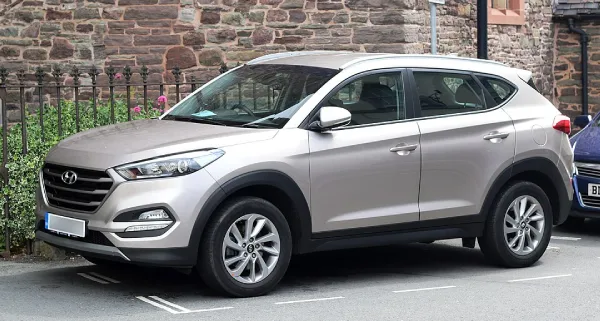Table of Contents
- Summary
- Cost and Choosing Which to Purchase
- motor, gearbox, horsepower, and top speed
- Capacity for Payload and Towing
- Fuel Economy
- Cargo, comfort, inside, and interior.
- Safety 2019 Hyundai Tucson
Summary
Kanye West’s timeless lyrics about winning the Vince Lombardi Trophy and then driving home from the Super Bowl in a car with the flying H emblem grow much less disparaging as Hyundai’s products get better with each new model year. Take the Hyundai Tucson, for example: The well-built cabin, numerous features, and fashionable exterior give the Tucson an expensive, even luxurious appearance, particularly in the top two models. It’s no surprise that the Tucson outperforms its competitors by thousands of dollars; providing more for less has long been a fundamental aspect of the Hyundai brand. The Tucson is a long-lasting crossover when you combine all of that with the industry’s longest powertrain warranty coverage.
Several improvements have been made to the 2019 Hyundai Tucson, beginning with new wheel designs, three new colors (white, brown, and blue), and updated styling with a reworked grille and headlamps. A 2.4-liter four-cylinder engine has replaced the turbocharged 1.6-liter four-cylinder engine in the SEL, Sport, Limited, and Ultimate versions. Updates to the inside include a redesigned rearview mirror, a revised dashboard design, and optional leather seat covering. Additionally, Hyundai has made lane-keeping assistance and automated emergency braking standard; more sophisticated systems like adaptive cruise control and a driver-attention monitor are also available as options.
Cost and Choosing Which to Purchase
Depending on the grade and extras, the 2019 Hyundai Tucson can cost anywhere from $24,445 to $32,795.
The 2019 Tucson is a great value because it has more features and is cheaper than most rivals. The mid-range SEL offers the best value in the lineup. It adds features including a rear-seat USB port, dual-zone automatic climate control, and a more flamboyant external design. All Tucson models come with front-wheel drive as standard, while all-wheel drive is an option.
motor, gearbox, horsepower, and top speed
The Tucson can be powered by a 2.0-liter four-cylinder engine with 164 horsepower or a 2.4-liter engine with 181 horsepower, both of which are mated to a six-speed automated transmission. In all our tests, the standard 2.0-liter engine performed sluggishly. Although we haven’t tested it yet, we anticipate that the updated 2.4-liter engine will provide marginally faster acceleration.
The Tucson’s handling is competent but not particularly sporty, so it’s not especially noteworthy. Overall, the Tucson changes direction confidently, has well-weighted steering, and controls body roll. It also has a smooth, elegant ride, with the suspension absorbing all but the worst bumps. We think this balanced approach will attract crossover buyers since it doesn’t favor the sporty or floaty extremes of the handling spectrum.
Capacity for Payload and Towing
The 2014 Hyundai Elantra has a maximum towing capacity of 1300kg. Some models also offer heavy-duty or towing option packs, which can increase towing capacity, as well as options that can hamper it. Towing capacities can vary wildly due to a large number of factors.
Fuel Economy
The EPA ratings for the Tucson’s two four-cylinder engines are just mediocre for its class. We are unsure of how the Tucson’s fuel economy compares to its competitors in the real world because we last tested the 2.0-liter engine in 2016 before we began our 200-mile highway fuel-economy test. The 2.4-liter is a new addition to the Tucson lineup, and we anticipate being able to update this review with test results shortly.
Cargo, comfort, inside, and interior.
The Tucson’s stylish cabin greets passengers with well-constructed surroundings that feature European-style design, precisely fitted panels, and easy-to-use controls. The all-black color scheme is a little monotone, but choosing beige upholstery creates some contrast. YES Essentials provides the usual cloth seats, which Hyundai says lower static and are resistant to stains and odors. The Limited and Ultimate models come with leather as standard equipment for those who like it. Available premium options like heated and ventilated front seats, a heated steering wheel, heated rear seats, and dual-zone temperature control with an integrated air ionizer raise the luxury factor even further.
Standard features include a 7.0-inch touchscreen, Apple CarPlay, and Android Auto as part of a comprehensive infotainment system. Upgrading to the Limited or Ultimate adds in-dash navigation and an additional inch to the touchscreen’s size.
The Tucson could accommodate 22 of our carry-on bags; with the seats up, it could hold seven. If you remove the back seats, it should have adequate space for most buyers. Its internal cubby storage is sufficient but not exceptional, and its overall load volume is average for the segment.
Safety 2019 Hyundai Tucson
The Insurance Institute for Highway Safety and the National Highway Traffic Safety Administration both commend Hyundai’s small crossover for its impressive performance in crash tests; newly standard driver-assistance features like automated emergency braking and lane-keeping assist provide an additional degree of security. Extra features are not required. Important safety features consist of
Automated emergency braking standard
Normal lane-keeping assistance
Adaptive cruise control is available.

Leave a Reply